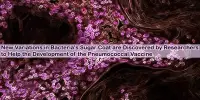Cotton plants endemic to Mexico’s Yucatan Peninsula may appear identical — untidy and uncontrolled bushes with flowers that change from pale yellow to violet as pollinators visit. However, genes from genetically modified cotton crops have caused some of these natural plants to become fundamentally different, altering their biology and the way they interact with insects.
One form of escaping gene reduces the amount of nectar exuded by wild cotton. Cotton gets devoured because it lacks the ability to recruit defense ants that protect it from plant-eaters. Another fugitive gene causes wild cotton to generate an abundance of nectar, attracting a large number of ants that may keep other insects, including pollinators, at bay, according to a study published in Scientific Reports.
“These are profoundly interesting effects,” says Norman Ellstrand, an evolutionary biologist at the University of California, Riverside. “It’s the first case that really suggests that a whole ecosystem can be disrupted” after transgenes enter a wild population.
According to Alicia Mastretta Yanes, a plant molecular ecologist at Mexico City’s National Commission for the Knowledge and Use of Biodiversity, the findings call into question a long-held belief that when genes from genetically modified crops escape into the wild, they have only a neutral effect on wild plants or pass on their benefits to weeds. According to her, the findings demonstrate that unanticipated outcomes of this DNA transfer, some of which “were never imagined or at least were not assumed as probable,” do occur on occasion.
The findings call into question a long-held belief that when genes from genetically modified crops escape into the wild, they have only a neutral effect on wild plants or pass on their benefits to weeds. The findings demonstrate that unanticipated outcomes of this DNA transfer.
Alicia Mastretta Yanes
Previously, scientists attempted to explain what happens when DNA from genetically engineered crops ends up in their wild counterparts. However, the vast majority of research has been conducted under strictly controlled conditions, and very few have examined the effects, if any, of these gene transfers on wild ecosystems.
Ana Wegier, a plant geneticist at the National Autonomous University of Mexico in Mexico City, and her students were inspired to investigate due to the scarcity of evidence. The country served as their natural laboratory. Cotton (Gossypium hirsutum) initially developed and diversified in Mexico between 2 million and 1.5 million years ago, and native variations continue to sprout across the country. In the last 25 years, vast fields of fluffy genetically engineered cotton have also cropped up across the northern part of the country.
During that period, Wegier traveled throughout Mexico in quest of wild cotton, only to discover it on the brink of cliffs, municipal dumps, or in the middle of a highway. She claims that wild cotton prefers to grow in the most hostile environments, where it does not have to compete with other species. Wegier and her colleagues visited the Ra Lagartos biosphere reserve, an isolated coastal location on the Yucatan Peninsula, in 2018. The researchers spent long days studying and sampling cotton plants under the sweltering sun, as swarms of mosquitoes bit them incessantly.

Back in Wegier’s city lab, the team extracted DNA from the 61 plants they had collected and discovered that 24 of them lacked transgenes. Twenty-one plants possessed a transgene that gave glyphosate resistance; seven could now create a lethal toxin that kills harmful insects, and the remaining nine had absorbed both escaping genes into their genetic code.
“What struck me the most was how easy it was to uncover alterations where we didn’t expect them,” Wegier adds, despite the fact that the nearest fields of genetically altered cotton are nearly 2,000 kilometers away.
Plants with glyphosate resistance generated significantly less nectar when exposed to a stress-inducing compound than wild plants. The nectar is a delicious treat secreted by wild cotton whenever it is consumed in exchange for the bodyguard services of particularly aggressive ant species. These plants likewise appeared to be the most ragged before the samples were taken. With no pleasant reward to offer and no ants to protect the cotton from hungry herbivores, these plants experienced the most damage when compared to native plants that lacked the transgene.
When treated with the same chemical, the plants with the insecticide gene secreted nectar all the time, secreting more than the wild plants with no escaping genes, and became an enticing beacon to protecting ants. However, there were fewer plants carrying the pesticide gene in the researchers’ sample, implying that either the ants or the transgenic were frightening off other insects. This could have interfered with the pollination of the cotton blooms, stopping the plant from reproducing.
Hugo Perales, an agroecologist at the Colegio de la Frontera Sur in Chiapas, Mexico, believes the findings are intriguing, but he advises caution. According to him, the researchers were compelled to operate with a relatively small number of plants due to the uncontrolled, real-world environment of Ra Lagartos. “There’s a hint that something is going on, but this hint needs to be confirmed.”
The study’s consequences are evident to Wegier. She contends that because Mexico is the repository of cotton’s genetic variety, it would be prudent to prohibit the entrance of more genetically modified types. “We know that the presence of transgenes is irreversible, and so are the [ecological] repercussions,” she explains.
















